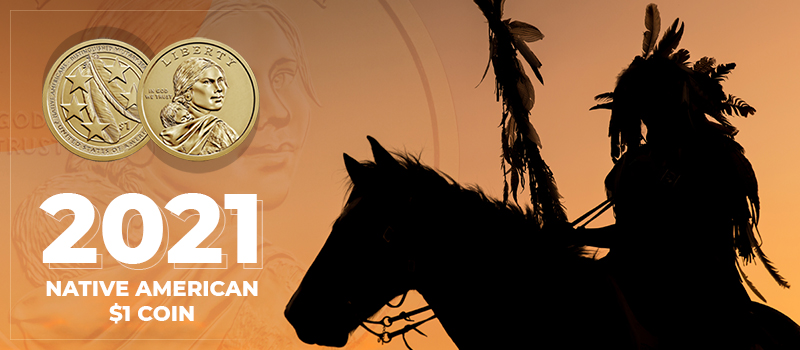2021 Native American $1 coin

Native Americans have the highest number among any ethnic groups in the United States military. Though in the early days of the union, they were treated most unfairly, Native Americans have always been ready to fight for their tribe and country. The ideals of strength, valor, pride and devotion to homeland have been the hallmarks of Native Americans and they brought it to every conflict and war they were involved in. This year, the Native American $1 coin will have a reverse design honoring the contributions of Native Americans in the U.S. military.
Native Americans in the U.S. military
Native Americans were mostly peace loving but had fierce warriors amidst them. The art of war was a common part of life in any native tribe. Native American warrior garb included animal skins and feathers that helped camouflage them to their enemies. There were frequent battles between tribes and their fighting skills were honed to perfection. When the Europeans came with their larger numbers, and muskets, Native Americans couldn’t cope with just their bows and arrows. But they were able to match with their fiery warrior spirit.
During the American revolutionary war, they worked with both American and British troops mostly as scouts who knew the terrain much better than the comparatively newly arrived Americans or English. In the Civil War, the Union army recruited three units of Native Americans as scouts. They helped to locate enemy locations and convey them back easily to their soldiers. The Confederates employed them for the same purpose.
The First World War saw huge numbers, nearly 12,000 Native Americans volunteering to fight alongside Americans. Even before the famous Navajo code-talkers, Choctow Indians took care of the field communications that made it easier to convey messages without them being understood. Four men from the 142nd Infantry of the 36th Texas-Oklahoma National Guard were awarded France’s Croix de Guerre and others were awarded the Church War Cross for courage.
The Second World War saw nearly 44,500 Native Americans enlisting to serve in the Pacific and European theaters of the war. The Marine Navajo code-talkers, numbering nearly 400, were able to communicate without the Japanese getting wind of the information being passed about troop strength, defensive coordination, and other strategic information. In the European Theater of the war, seventeen Comanche code-talkers were part of the Army Signal Corps. Native Americans were an integral part of the American troops in the Korean war, the Vietnam war, the Gulf war and more recently the Iraqi and Afghanistan war.
The design
Native Americans have stood shoulder to shoulder with American counterparts from the Revolutionary war to the latest conflict around the world. This year the Native American $1 coin honors the Native Americans in the U.S. military.
The obverse design retains the central figure “Sacagawea” carrying her infant son, Jean Baptiste. The reverse design features eagle feathers, which were traditionally earned in battle or by performing a brave deed. Eagle feathers are revered and respected, receiving the utmost care and handling, and are to be displayed proudly in homes. Stars representing five branches of the U.S. military are in the foreground, while a circle provides an additional reference to Native Americans.
This entry was posted in U.S. Coins on March 05, 2021 by lavanya kannan

Leave a comment